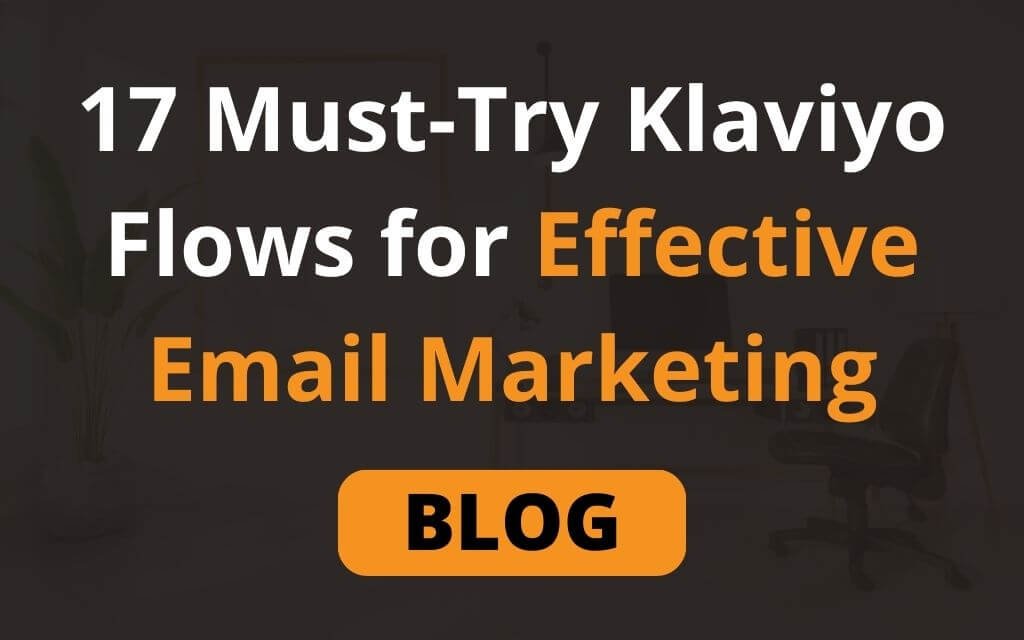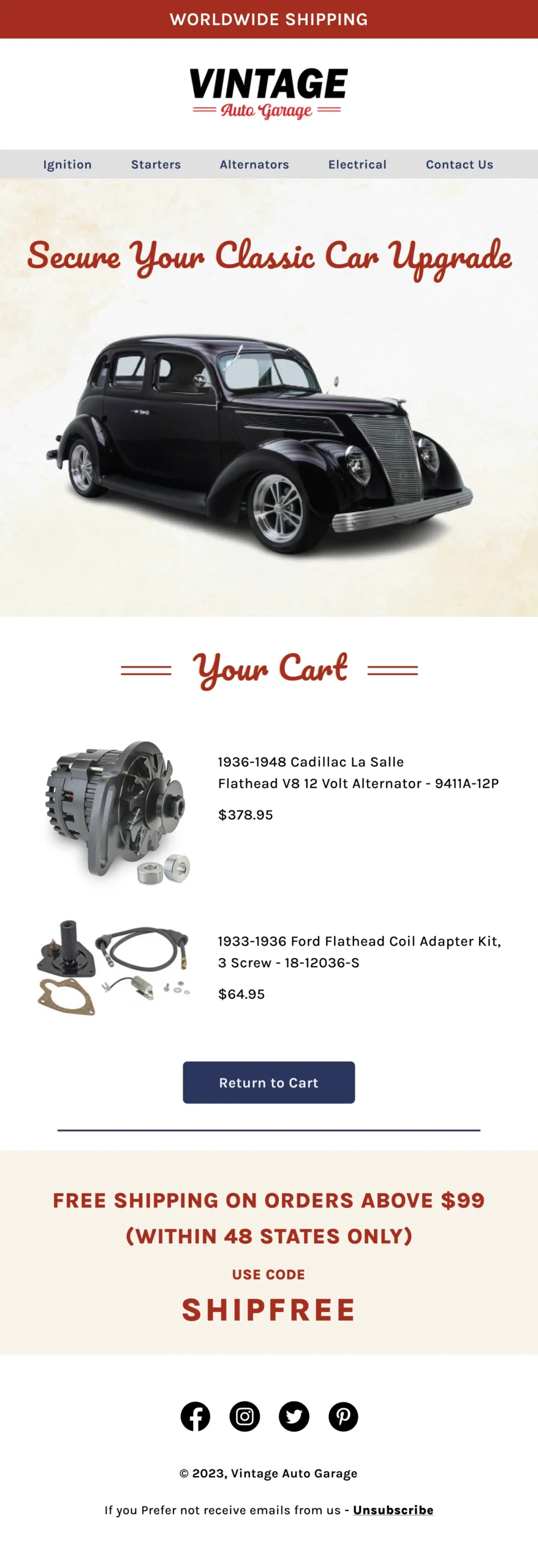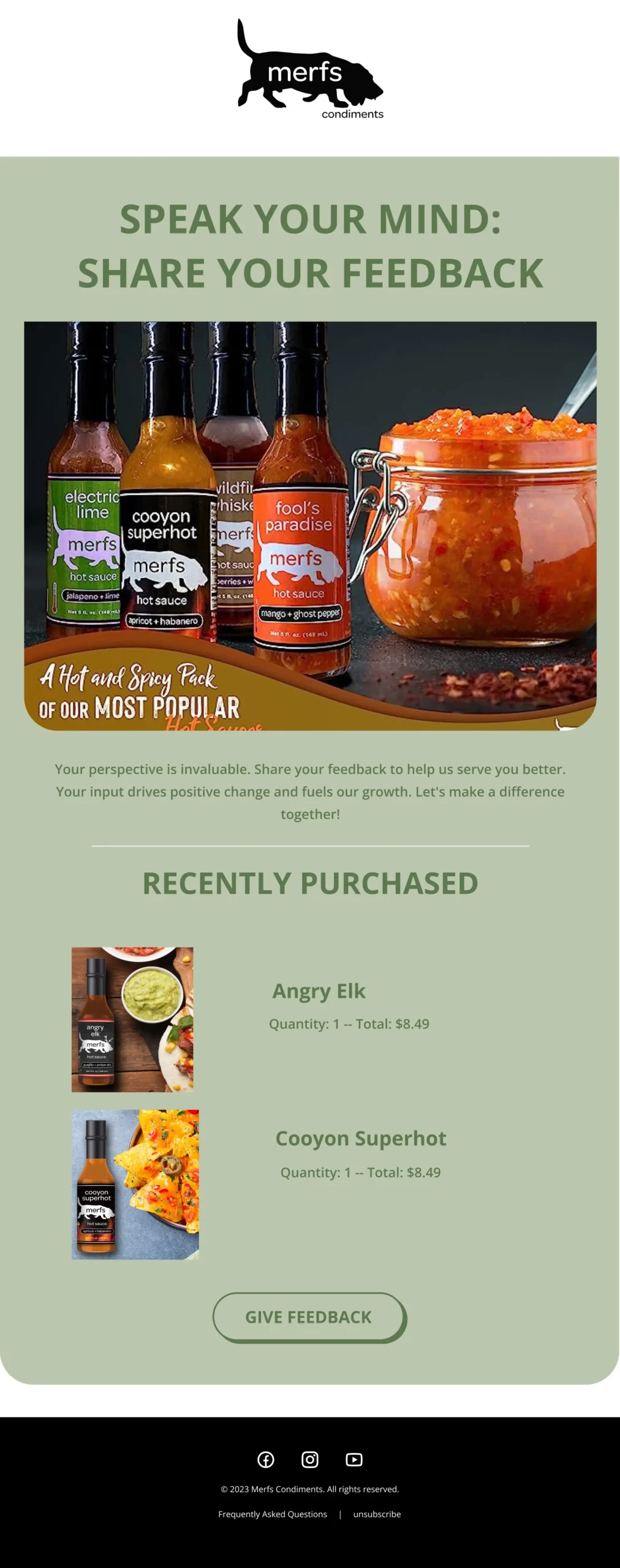Optimize Your Strategy: 17 Best Klaviyo Flows Revealed

As an e-commerce business owner or marketer, effectively nurturing your customer relationships is crucial for success. This is where Klaviyo flows come in. Klaviyo, the popular marketing automation platform, offers a range of powerful tools to help you automate and optimize your email marketing campaigns. Klaviyo flows, in particular, allow you to create automated sequences of emails that are triggered by specific actions or events, ensuring timely and personalized communication with your customers. In this article, we will explore the importance of Klaviyo flows for e-commerce businesses and delve into the top 17 best Klaviyo flows you should consider implementing. Additionally, we will provide insights on how to set up and optimize some of the most essential klaviyo flows, helping you maximize customer engagement, boost conversions, and drive growth in your business.
1. Introduction to Klaviyo Flows
Understanding Klaviyo Flows
Klaviyo Flows are like your trusty sidekicks in the world of email marketing. They are automated email sequences that you can set up to engage with your customers at the right time, with the right message. These flows are triggered by specific actions or events, allowing you to deliver targeted and personalized emails to your audience without lifting a finger.
The Benefits of Using Klaviyo Flows
The beauty of Klaviyo Flows is that they take the heavy lifting out of your email marketing efforts. By automating your email sequences, you can save time and nurture your customer relationships effortlessly. The benefits of using Klaviyo Flows include increased customer engagement, improved conversion rates, and the ability to deliver personalized content that resonates with your audience. Plus, with the right flows in place, you can recover abandoned carts, re-engage lapsed customers, and drive repeat purchases, all while you focus on other aspects of your business.
2. Importance of Klaviyo Flows for E-commerce Businesses
Why E-commerce Businesses Need Klaviyo Flows
In the fast-paced world of e-commerce, where competition is fierce, building strong customer relationships is crucial. Klaviyo Flows provides e-commerce businesses with a powerful tool to connect with their customers throughout their buying journey. Whether you want to welcome new subscribers, recover lost sales, or keep your loyal customers engaged, Klaviyo Flows can help you achieve your goals. You can look at our Klaviyo email marketing agency offerings, which include an automated email flow setup.
The Role of Klaviyo Flows in the Customer Journey
The customer journey is a complex process, and Klaviyo Flows plays a vital role in guiding your customers through each stage. From the initial welcome series to the post-purchase follow-up, Klaviyo Flows allows you to send targeted messages that cater to your customer's specific needs and interests. By delivering timely and relevant content, you can nurture your customers, build trust, and ultimately drive more sales.
3. Top 17 Klaviyo Flows Every Marketer Should Implement
Flow 1: Welcome Series
This is your time to create a memorable first impression with the welcome series. Use this flow to introduce your brand, showcase your products, and engage with new subscribers.

Flow 2: Abandoned Cart
Send email reminders to clients who abandoned their carts empty to recover lost sales. Offer incentives or address any concerns they may have to entice them back to complete their purchase.

Flow 3: Post-Purchase Follow-up
Keep the momentum going after a purchase by sending a series of follow-up emails. Thank your customers, ask for feedback or reviews, and offer upsell or cross-sell opportunities.
Flow 4: Win-back
Re-engage with customers who haven't purchased in a while. Offer exclusive discounts, remind them of the benefits of your products, or share new updates to entice them back.

Flow 5:- Referral Program
Purpose: Encourage customers to refer their friends and family to your business.
Setup: Create a referral program that rewards customers for referring new customers. Send automated emails with referral links and incentives to encourage participation.
Flow 6: Browse Abandonment
Did someone show interest in a specific product but didn't make a purchase? Use this flow to send targeted emails based on their browsing behavior, highlighting the product they viewed or recommending related items.

Flow 7: Product Review Request
Purpose: Collect authentic product reviews from customers to build social proof and trust.
Setup: Send automated emails requesting product reviews a few days after a customer receives their order. Make it easy for customers to leave reviews by including direct links and clear instructions.
Flow 8:- Re-Engagement Campaign
Encourage customers to share their feedback and reviews by sending a follow-up email after a reasonable amount of time has passed since their purchase. Offer incentives or make it easy for them to leave a review.

Flow 9: Upsell/Cross-sell
Maximize your revenue by suggesting relevant upsell or cross-sell products to your customers based on their previous purchases. Show them how these additional products can enhance their experience.
Flow 10: Birthday/Anniversary
Make your clients feel special on their birthdays or anniversaries. Send personalized offers or greetings to celebrate these milestones and strengthen the bond with your audience.
Flow 11: Order Confirmation
Keep your customers informed and reassured by sending order confirmation emails. Include details about their purchase, estimated delivery dates, and contact information for any questions or concerns.
Flow 12: Shipping Notification
Provide updates on the shipping progress of your customers' orders. Include tracking information and estimated delivery dates to keep them in the loop.
Flow 13: Customer Feedback/Satisfaction Survey
Gather valuable insights by asking your customers for feedback on their experience. Send surveys or feedback requests to understand areas for improvement and show your commitment to providing excellent customer service.
Flow 14: VIP/Exclusive Offers
Reward your most loyal and engaged customers with exclusive offers or early access to new products. Make them feel like VIPs and foster a sense of loyalty towards your brand.
Flow 15: Replenishment Reminder
For products that require regular replenishment (like skincare or consumables), send timely reminders to prompt repeat purchases. Make it easy for customers to reorder and ensure they never run out of their favorite products.
Flow 16: Influencer Collaboration
If you collaborate with influencers or have an affiliate program, use this flow to provide resources, updates, or exclusive promotions to your partners. Foster strong relationships with your brand ambassadors and leverage their influence to drive sales.
Flow 17: Event/Conference Promotion
If you're hosting an event or attending a conference, use this flow to promote it to your subscribers. Send out invitations, share event details, or offer exclusive discounts to encourage attendance.
4. Setting up the Welcome Series Flow
Importance of a Welcome Series Flow
The welcome series flow is your opportunity to make a lasting impression on new subscribers. It sets the tone for your brand, introduces your products or services, and establishes a relationship with your audience from the start.
Key Elements to Include in a Welcome Series Flow
When setting up your welcome series, consider including elements such as a warm welcome email, an introduction to your brand, product highlights, customer testimonials, and clear call-to-action buttons to encourage engagement.
Tips for Personalizing the Welcome Series Flow
To make your welcome series flow more effectively, personalize it based on your subscribers' interests and actions. Use their name in the emails, segment your audience to deliver targeted content, and consider adding a special offer or discount to make your new subscribers feel valued. Remember, the more personalized and relevant your emails, the higher the chances of building a strong connection with your audience.
5. Designing a Successful Abandoned Cart Flow
Understanding Abandoned Cart Flow
Imagine this: you're shopping online, adding items to your cart, and then, for some mysterious reason, you get distracted and abandon your cart without completing the purchase. Sound familiar? Well, you're not alone. Abandoned carts are a common occurrence in the e-commerce world, but fear not! With the right strategy, you can win back those lost sales.
An abandoned cart flow is a series of automated emails designed to re-engage with customers who have abandoned their carts. It's like a virtual hand reaching out to gently remind them of their forgotten treasure and give them a little nudge to complete their purchase. These emails are triggered when a customer adds items to their cart but leaves without checking out.
Best Practices for Abandoned Cart Flow
When setting up your abandoned cart flow, there are a few best practices to keep in mind:
1. Timing is everything: Send the first email within an hour or two of the cart abandonment. You want to catch them while the memory of their shopping experience is still fresh.
2. Craft compelling subject lines: Your subject line should be attention-grabbing and create a sense of urgency. "Don't Miss Out on Your Dream Purchase!" is an example.
3. Personalize those emails: Use dynamic tags to include the customer's name and the items they left in their cart. Make it seem as though you are speaking with them directly.
4. Offer an incentive: Sometimes a little push is all it takes to seal the deal. To get customers to come back and finish their order, provide a discount or free shipping.
5. Test and refine: Don't be afraid to experiment with different email designs, subject lines, and incentives. Keep an eye on the outcomes and tweak as necessary to suit your audience's needs.
Optimizing the Abandoned Cart Email
The abandoned cart email is the heart and soul of your flow. Here are a few tips to optimize it:
1. Keep it short and sweet: People have short attention spans, so get to the point quickly. A concise and compelling email will have a higher chance of being read and acted upon.
2. Use persuasive language: Use persuasive copywriting techniques to create a sense of urgency and desire. Highlight the benefits of the products and what the customer stands to gain by completing their purchase.
3. Clear call-to-action: Make it crystal clear what you want the customer to do next. Use an eye-catching button that directs them back to their cart or to complete the purchase.
Remember, the goal is to remind customers of their abandoned cart, spark their interest, and guide them back to the checkout page. With a well-designed and optimized abandoned cart flow, you'll be recovering lost sales like a champion.
6. Optimizing the Post-Purchase Follow-up Flow
Importance of Post-Purchase Follow-up
Congratulations! Your customers have made a purchase, and now it's time to focus on nurturing that relationship even further. The post-purchase follow-up flow plays a crucial role in enhancing customer satisfaction, building loyalty, and maximizing repeat purchases.
A post-purchase follow-up flow consists of a series of automated emails that are triggered after a customer completes a purchase. These emails are designed to express gratitude, provide order updates, offer additional support, and cross-sell related products or services.
Essential Components of the Post-Purchase Follow-up
To ensure your post-purchase follow-up flow hits all the right notes, consider incorporating these essential components:
1. Thank you email: Start by expressing genuine appreciation for the customer's purchase. Show them that their support is valued and that they are more than just a transaction.
2. Order confirmation and tracking information: Keep customers informed about their order status and provide them with tracking details. This helps build trust and ensures transparency in the buying process.
3. Product feedback: Encourage customers to leave reviews or provide feedback about their purchases. This not only helps future shoppers make informed decisions but also shows that you value their opinions.
4. Up-sell and cross-sell opportunities: Showcase related or complementary products that the customer might be interested in based on their previous purchase. Tailor your recommendations to their preferences and buying history.
5. Exclusive offers and loyalty rewards: Reward your loyal customers with exclusive discounts or offers. Make them feel part of an exclusive club and keep them coming back for more.
Remember, the post-purchase follow-up flow is your chance to create a lasting impression and turn a one-time customer into a loyal advocate for your brand. Take the time to optimize each email in the flow and provide value beyond the initial purchase. By harnessing the power of Klaviyo flows, you can take your email marketing efforts to new heights. Implementing these 17 essential flows and following best practices for setting them up will enable you to create highly personalized and automated customer journeys. From welcoming new subscribers to recovering abandoned carts and re-engaging dormant customers, Klaviyo flows offer endless possibilities for nurturing and growing your e-commerce business. So, don't miss out on the opportunity to optimize your email marketing campaigns with Klaviyo and start reaping the benefits today.
Frequently asked questions
1. Can I use Klaviyo flows for any type of e-commerce business?
Yes, Klaviyo flows can be applied to various types of e-commerce businesses, regardless of the industry or niche. Whether you sell physical products, digital goods, or services, Klaviyo flows can help you engage with your customers and drive conversions.
2. How do I set up Klaviyo flows?
Setting up Klaviyo flows involves creating a series of emails, deciding on the triggers that will initiate each email, and determining the timing between each email. It is done through the Klaviyo platform, where you can easily configure and customize your flows based on your specific business needs and customer journey.
3. Can I track the performance of my Klaviyo flows?
Absolutely! Klaviyo provides comprehensive analytics and reporting features that allow you to track the performance of your flows. You can monitor metrics such as open rates, click-through rates, and conversion rates, enabling you to optimize your flows for better results.
4. Are Klaviyo flows only for email marketing?
No, while Klaviyo is primarily known for its email marketing capabilities, the platform also supports various other channels such as SMS marketing and personalized web experiences. You can incorporate these channels into your Klaviyo flows to create a multi-channel marketing strategy and reach your customers through different touchpoints.

